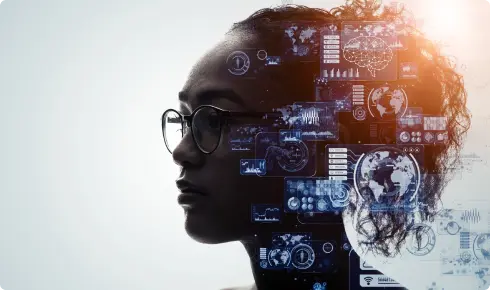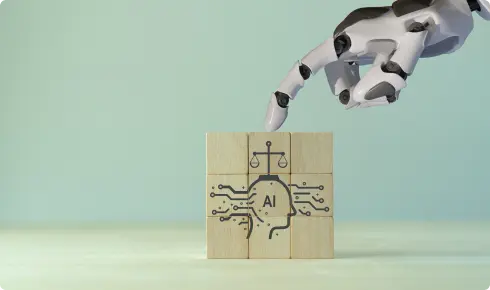We’ve already got self-driving cars. So what’s next for intelligent innovation in the workplace?
BY FAISAL HOQUE
Anyone raising a child with the benefits of the digital world doesn’t have to look past those tiny fingertips tapping their own apps to realize how quickly we’re transitioning.
Theoretical physicist and futurist Dr. Michio Kaku argues that humankind is at a turning point in history. He claims that in this century, we are going to make a shift from the “Age of Discovery” to the “Age of Mastery,” a period in which we will move from being passive observers of life and nature to its active choreographers. According to Kaku, robots with human-level intelligence may finally become a reality, and in the ultimate stage of mastery, we’ll even be able to merge our minds with machine intelligence. It’s how we harness this mastery that will matter.
CONVERGENCE OF DISCIPLINES
The science fiction is becoming fact. During a recent visit to Google headquarters, California Gov. Jerry Brown signed legislation to allow autonomous vehicles to operate on the state’s roads. Brown touted the signing of the bill as “turning today’s science fiction into tomorrow’s reality.” California is the third U.S. state to legalize self-driving cars, following Nevada and Florida, where similar laws earlier were passed this year.
This is just the beginning. We need to be ready for the next set of intelligent innovation, in any field. Hospitals are embracing robotic surgery, and patients are choosing it more and more for many procedures. Robotic-assisted laparoscopic radical prostatectomy, is minimally-invasive, laparoscopic surgery, and has become the standard of care for prostate cancer patients. It offers lower morbidity, less pain, less blood loss and increased precision.
It is the leader’s responsibility to prepare his or her organization for what lies ahead–and that will mean changes in what we are doing now to break down the silos and create multi-disciplinary teams–in order to prepare for the unknown.
CULTURAL DIVERSITY
The underlying, critical element of achieving and maintaining convergence in the modern organization is nothing less than individual leadership. It takes leaders with perseverance and courage to build and implement the cross-functional management culture with the tenets of converged disciplines.
It is a continual evolution and revolution of concepts and opportunities that reflect contemporary and future business operations and objectives.
An essential part of this transition requires both left-brained (analytical) and right-brained (creative) talent and culture. Leaders of the future will approach this collaboration challenge by defining cross-functional teams as ‘personas’. These are roles that one assumes or displays in society or the workplace. Their skills and behaviors influence their interactions with other people. Some personas are analytical, some are creative, and others are a combination. A few personas are as follows:
- Learning personas that keep an enterprise from being too internally focused and trapped within their comfort zone. Learners need to be sufficiently humble to question their worldview and remain open to new insights every day.
- Organizing personas that serve to move the innovation lifecycle forward. Even the best ideas must continuously compete for attention, resources, and time. These champions are skilled at navigating processes, politics, and red tape to bring an innovation to market.
- Building personas are the connections between the learning and organizing personas; they apply insights from the learning personas and channel the empowerment from the organizing personas to make new things happen. Builders are often highly visible and close to the heart of the innovation action.
Establishing these personas creates the capabilities needed to understand how the innovation process works and the role each team plays in it. This allows enterprises to continually drive innovation on two levels: product and business model. Products must evolve with market dynamics and customer needs and desires. Consequently, business models must change or evolve as innovation either creates or changes products. We can see this dynamic unfolding today with the evolution of cloud computing.
However, to sustain product and business innovation, leaders must build a flexible culture that can attract and empower a wide variety of talent. It is all too easy for organizations to fall into the “analysis trap” and focus on left-brain skills like process, measurement, and execution.
They have to embrace right-brained skills, such as creativity, imagination, analogy, and empathy. Unlike most organizations that separate these individuals into silos–such as marketing versus engineering–enterprises in the age of mastery will build teams that morph as new processes and ideas unfold.
ARE YOU READY?
Antiquated approaches to business provide no edge in a global marketplace where technology has enabled people to lead from any corner of the world. The old boardroom is a boring room for anyone seeking to lead in tomorrow’s world. The modern workplace is changing and so are its leaders. The C-suite is getting younger and more women are climbing the corporate ladder to unseat the stereotypical bitter, biased old man who furrows his brow and grunts at any hint of progression.
Leading has become more about connecting, shaping and influencing each of our multi-disciplinary converged ecosystems rather than controlling and demanding. More than ever, this era provides all of us with the platforms and the opportunities to choreograph our future.
Copyright © 2017 by Faisal Hoque. All rights reserved.
[Featured Image: Nik MacMillan on Unsplash]
Read the original article @FastCompany.















